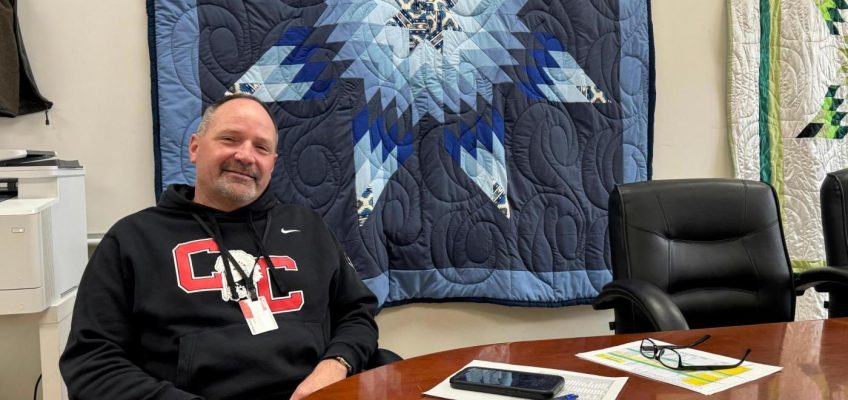On a sunny mid-July evening, dozens packed into a community center in Memorial, one of west Houston’s cushier neighborhoods, to meet state Representative James Talarico, the Austin Democrat whose reedy shoulders presently bear the weight of many Texas liberals’ dreams. Before breaking quorum in August with his fellow House Democrats, the 36-year-old former teacher was already laying the groundwork for his now-formal run for U.S. Senate—traveling to rallies across the state, appearing on Joe Rogan’s podcast, and, on that day, helping to kick off the Texas Democratic Party’s “candidate recruitment program” in Houston, in partnership with the Texas Majority PAC (TMP).
Backed by the liberal megadonor George Soros and his family and led by veterans of Beto O’Rourke’s two statewide campaigns, TMP has quickly grown into a central vehicle for Texas Democrats’ long-dashed ambitions to flip the state, thanks to one of the largest political investments in recent memory. During the 2024 election—a transcendental horror for Democrats, who saw historic losses nearly across the board—the group spent roughly $10 million. Going forward, the Texas Observer has learned, TMP expects to have a budget of at least $20 million a year through 2032.
If up-and-coming candidates like Talarico carry the weight of Democratic hopes, groups like TMP are meant to provide the scaffolding—which perhaps helps explain why Attorney General Ken Paxton targeted TMP with an investigation over its role in the state House Democrats’ recent quorum break. TMP’s initiative alongside the Texas Democratic Party, dubbed Blue Texas, intends to mobilize thousands of volunteers, target and turn out voters, deliver financial resources to local county parties, and recruit candidates to contest every legislative and congressional seat in the state. Through this partnership, TMP takes on many of the load-bearing costs while also maintaining control over the data and on-the-ground organizers.
TMP does so, in part, through a network of localized PACs that share data and face fewer campaign finance regulations than traditional political parties—a framework that TMP, with the help of the Democratic National Committee’s longtime lawyer, had successfully petitioned the Federal Election Commission for in 2024.
As of September, TMP’s volunteers have been making around 100,000 phone calls per week, TMP Executive Director Katherine Fischer told the Observer, asking Democrats who didn’t vote last cycle what issues matter most to them and what would compel them to vote in 2026. By mid-September, TMP had made more than one million calls and “completed over 50,000 conversations with non-voting” Dems, she said. In addition to rallies in Houston, Dallas, and Fort Worth—headlined by party leaders including O’Rourke, Wendy Davis, Congresswoman Jasmine Crockett, Colin Allred (also running in the current U.S Senate primary after flaming out in his 2024 bid), and Talarico—their candidate recruitment team has also visited Lubbock, Abilene, and East Texas.
The aggressive and well-financed rise of TMP has, however, come with its share of discontent among the party ranks. While several key local Democratic party chapters speak effusively of their partnerships with TMP and plan to double down on the collaboration, others liken the PAC to a bait-and-switch operation that commandeers the grassroots manpower of established county parties and fails to deliver on its lofty promises. In interviews with more than two dozen party operatives, insiders, and activists from across Texas, many expressed skepticism, frustration, and even outright hostility toward TMP.
The Harris County Democratic Party (HCDP), the largest county party in Texas, where a whopping 27 percent of projected Democratic voters in Texas reside, is conspicuously absent from TMP’s list of partners this cycle. TMP first approached the local party in May, with goals for the partnership similar to those pursued in other counties. Negotiations swiftly broke down.
HDCP did not want to cede the level of control that TMP was demanding. Instead, the local party crafted a counteroffer in the form of a preliminary contract, which the Observer obtained, to outline responsibilities between itself and TMP. The document states that TMP would hire 15 organizers in Harris County—at a 6-month salary of nearly $30,000 plus benefits—and ensure that certain metrics and benchmarks were being met, while HCDP would direct the organizers’ daily tasks. The proposed contract also stipulated that organizers would be “encouraged to join a union of their choice,” with “a verbal or written statement” indicating HCDP and TMP are “supportive of staff efforts to unionize.”
TMP rejected this proposal. In an email to HCDP, which the Observer reviewed, Fischer stated that the group could not sign the custom arrangement “without undermining our relationships with every other county in the state.” Other partnered counties had participated in TMP’s hiring process for its field organizers, but they had less control over discipline and daily tasks, and while written encouragement to unionize was typical HCDP policy, it was out of line with TMP’s practices, according to Fischer and local party officials. “Our staff must be subject to the same standards across the board, for legal reasons, but also for management best practice,” Fischer said. “We were unwilling to turn over our staff to an external organization.”
HCDP Chair Mike Doyle, who has helmed the local party since 2023, saw things similarly, albeit the other way around. “If somebody’s funding in stupid amounts [of money], they get to play a part in how that money gets spent, I understand that,” he told the Observer. But in the move to construct statewide infrastructure, the local players who’ve fought tooth and claw for their territory aren’t always eager to let the outside group waltz in. With TMP, Doyle said, “It’s always been, ‘Unless you sell out everything, your database control, the whole apparatus, we’re not giving a nickel.’ That’s not structure-building. That’s just a game.”
Texas Democrats’ most enduring dream, beyond hope in any individual candidate, is that their statewide “political machine” will get its proverbial shit together. To the extent it exists today outside of a range of discrete PACs and city-centric fiefdoms, the thinking goes that the party can and must professionalize, centralize, invest in, and properly scale its work across Texas. Only then will it have a system strong enough to topple Republicans’ fully industrialized regime. But this is a messier process than one might imagine, as TMP’s statewide work has shown.
In the embattled Rio Grande Valley, where TMP invested heavily during the 2024 elections that saw the erstwhile blue stronghold all but abandon Democrats, a Dem congressman opted to go it alone rather than entrust the nascent group with his reelection campaign outreach. In the Austin area, a PAC created specifically to work under TMP—with former Austin Mayor Steve Adler on the board—disintegrated well before the election. Jim Wick, an Austin strategist with decades of experience who oversaw the project, told the Observer that working with TMP was “a terrible experience, one of the worst I’ve ever had in my political career.” In Dallas, a former paid organizer for TMP, who asked to remain anonymous, described a burnout-inducing work culture that failed to build meaningful infrastructure: “You could feel that our presence was welcomed in the community—and needed—but then, there wasn’t really any follow-through.”
More recently, in mid-July, TMP incensed party activists in rural Texas when it announced its slate of rallies and candidate recruitment events in their backyards, such as Lubbock, Amarillo, and Tyler, without any input or outreach. “We don’t need outsiders trying to come in and tell us what to do,” Kerrigan Sanders, a member of the Texas Rural Democratic Caucus, told the Observer. “We just need the money.”
(Christopher Collins)
For years, Texas was viewed as an ATM for out-of-state candidates fundraising for their national aspirations. A torrent of groups has sought to reverse that tide, beginning with one of TMP’s antecedents, Battleground Texas. The 2013 effort, helmed by former Obama campaign aide Jeremy Bird (now “Executive Vice President of Driver Experience” at Lyft), promised a grassroots effort to mobilize “Texans in every corner of the state,” from “top to bottom of the ballot,” through a get-out-the-vote (GOTV) campaign. It raised over $10 million in its first two years of life and was sober enough to see Texas wouldn’t turn blue overnight. (Its goal was to make Texas a swing state by around 2020.) But after Republicans steamrolled through the 2014 cycle, the group’s reputation among donors never fully recovered, and it faded into irrelevance.
O’Rourke’s surprise near-win in 2018’s Senate race prompted similar programs, including his own GOTV-focused Powered by People PAC and TMP, alongside a carousel of national super PACs that swooped in to spend huge sums of money in recent election cycles. But nothing has proven capable of coming close to recapturing his 2018 momentum.
One could have argued (at least prior to 2024’s lackluster turnout) that these efforts, like sedimentary layers, have steadily piled up, with voter engagement inching upward each cycle. Fischer’s political career began within this process, in 2018, as a Houston-based field organizer for O’Rourke. She quickly rose through the ranks and ended up running a team of field managers throughout southeast Texas. In 2021, she was field director for Philadelphia District Attorney Larry Krasner’s successful reelection campaign before returning to Texas in 2022 to manage O’Rourke’s ill-fated gubernatorial run. Speaking with the Observer, Fischer often referenced Democrats’ statewide work in Pennsylvania, which saw more than $1 billion in election ads alone last year. By contrast, “We’re squabbling over tens of millions in Texas.” Democrats here may be receiving more money than ever before, she said, but it’s a drop in the bucket compared to the key battleground states, and building a strong party means that operatives must shirk their “scarcity mindset.”
Brandon Evans, Krasner’s 2021 campaign manager, to whom Fischer reported at the time, said statewide projects like these are always a balancing act. “There’s always personalities; there’s always tension,” said Evans, a longtime Democratic operative in multiple states. The differences between a city- and state-wide campaign, he said, are as stark as they are obvious. Urban areas tend to lean Democratic, whereas suburbs and rural areas are more diffuse and often require more resources to mobilize. Meanwhile, the increased number of coalition partners means more places where something can go wrong.
Within these coalitions are many groups that market themselves as voter-turnout specialists. For them, “Data becomes a resource,” Evans said. Voter data—who owns it, and how reliable it is—has become the most coveted commodity in politics, including in Texas. “People are trying to put their own resources and campaigns and portfolios together.” In effect, data is what makes these groups “become proprietary” as they seek to distinguish themselves from all the other allied groups pitching big donors.
Territoriality, of course, was a sticking point in TMP’s negotiations with HCDP. But critics of TMP also point to a controversial internal report circulated within the Texas Democratic Party in February, which singled out the PAC for alleged “data falsification” and “systemic” voter outreach fraud. The blandly named “2024 Election Field Program Report” analyzed the strengths and weaknesses of the party and its allies’ voter outreach efforts, “exploring in-depth the differences between paid and volunteer programs” to “address stakeholder concerns.”
On average, paid canvassers knocked on more doors than volunteers, the report found, but they contacted far fewer voters, leading volunteers to “categorically overperform” compared to paid block-walkers. “Factors created by financial incentives”—rather than the goodwill and passion of dedicated volunteers—“[cast] doubt on the contacts that are supposedly happening,” meaning paid walkers were potentially speeding through their routes, dropping flyers at people’s doorsteps without actually knocking, thus reporting inflated numbers. The report concludes that “paid programs have grown significantly since 2018 and were far less effective in contacting voters per dollar than their volunteer counterparts.”
The report was summarizing all outreach efforts by Democratic groups—not just TMP. But in two graphs comparing door-knocking and voter contact rates of paid canvassers and volunteers, TMP was singled out. Fischer strongly denied these allegations at the time in a long, widely circulated email to then-Chairman Gilberto Hinojosa, requesting an “Immediate Correction” to the report. “Correlation, as the saying goes, doesn’t prove causality,” Fischer wrote. “You did not speak to any staff member at TMP, the county parties, or the other PACs about this accusation before making it publicly.” Regarding TMP’s GOTV operations, Fischer told the Observer: “I have never participated in a more strict quality assurance program than the one we did last cycle,” noting that an independent evaluator later determined TMP’s protocols were “exemplary.”
The real contention, however, was with the overarching framing of the report. “Of course volunteer programs outperform paid canvasses,” Fischer wrote in the email to Hinojosa, because “Volunteer programs tend to spend more time in higher-propensity, upper-income, white neighborhoods than paid canvasses do. … Are you suggesting that campaigns ought to stop spending money to speak to Black, brown, and working-class Texans about the value of their vote?”
TDP also hired its own independent evaluator, according to Monique Alcala, TDP’s executive director at the time, which found the state party’s analysis to be valid.
In March, Dallasite and repeat political candidate Kendall Scudder took over as chairman of the Texas Democratic Party, shortly after the field program report was circulated. He let Alcala go and promoted the report’s authors, Sam Gostomski and Ethan Lipka, to executive director and data director, respectively, but he also distanced his administration from its findings: “It’s a new Texas Democratic Party,” he told the Observer. “We’re operating in good faith with our partners.” In the past, he added, “There were personality disputes” between the party and TMP.
“We just had hostile interactions,” Alcala said of her dealings with TMP and Fischer in particular. Negotiations often became antagonistic and unproductive, she said. “I think [Fischer] thinks she’s smarter than everybody, and I don’t think that there’s any evidence in her background to suggest that she has the skillset to run a giant program like she is. A position like that requires self-reflection and the ability to recognize when to shift course.”
The critical post-election report mushroomed within the world of Texas Democratic politics. For some, it explained how TMP could have sunk approximately $860,000 in the Rio Grande Valley’s Cameron and Hidalgo counties to no apparent benefit.
According to documents shared with the Observer, TMP’s paid canvassers in Cameron County, home to Brownsville, knocked on more than 96,000 doors last cycle, exceeding their own goal by nearly 50 percent. TMP’s internal numbers show its “greatest impact” was in Cameron, Fischer said, though she clarified: “We were not running a persuasion program. We were running a turnout program.”
Kendall Scudder addresses attendees at an event in Brownsville on April 12. (Michael Gonzalez/Texas Observer)
In reality, meanwhile, the once solid-blue Rio Grande Valley became a political bloodbath for Democrats on election night. Final turnout in Cameron was lower than in the prior presidential election, and the county swung to Trump along with the rest of the region. A Democratic incumbent narrowly lost the Cameron County-based Senate District 27, giving Republicans their first state Senate seat in the Valley since Reconstruction. Dems had hoped to claw back a Brownsville-based House district they’d narrowly lost to Republicans in 2022, but their candidate was instead thoroughly routed.
Congressman Vicente Gonzalez, who represents the 34th Congressional District centered in the Valley, is “one of the only survivors” among South Texas Dems with multi-county territory, as he put it. Gonzalez told the Observer that he and his campaign declined to partner with TMP in 2024: “We had 50 paid canvassers walking every single day, and every paid canvass team has orders to report back to any other group that’s knocking on doors,” he said. “They ran into everyone at some point or another. If anyone else was canvassing, we were going to find out about it.” In total, he said, his campaign knocked on some 218,000 doors. “We never ran into them,” Gonzalez said, referring to TMP.
Jared Hockema, chair of the Cameron County Democratic Party, which partnered with TMP, offered a defense, saying these efforts only ever promise one to two points on the margin, and in blood-red electoral cycles like 2024, he argued, it’s never enough to swing results the other way. (The ousted incumbent state senator, Morgan LaMantia, lost her reelection by 1.1 percent, less than 3,000 votes.)
Hockema emphasized that his partnership with TMP last cycle enabled him to bring on full-time staff and begin organizing year-round phone banks and block walks. “We’ve never, ever had a field campaign at the scale we had through the help of TMP,” he said. Regarding the 2024 outcome, Hockema said Democrats lacked the two most important ingredients to winning an election: “a movement and a candidate,” referring to a lack of enthusiasm for Kamala Harris. Yet, in his view, that “does not mean that the efforts you undertake are not worthwhile. Elections, political parties, the campaign apparatus—they’re almost like a muscle. If you’re not exercising … you put yourself further behind.”
Meanwhile, Hidalgo County’s Democratic Party, the largest in the Valley, has fractured, in part over its relationship with TMP and its local affiliated PAC, with some local precinct chairs raising concerns about spending transparency.
In 2024, TMP also enabled El Paso County to hire its first-ever organizing director, which facilitated outreach efforts in areas the party had long abandoned, and also allowed the Williamson County party to hire full-time staffers. But both counties saw overall turnout decline, along with Democrats’ vote share.
Perhaps the sharpest points of contention between TMP and local parties were within red Texas’s big blue urban dots—namely Houston and Austin. “When you have a weak party, as we’ve had, you end up with all these different organizations that are trying to, you know, do what they feel is necessary to flip the state,” said Scudder, TDP’s chair. “We’re all so disjointed.”
For contrast, TMP pointed the Observer to Kardal Coleman, chair of the Dallas County Democratic Party, where TMP spent more than $1 million last cycle. In 2024, TMP was seeking a large county to use as a sort of petri dish. In negotiations, Coleman said, “As the second-largest county in the state of Texas, quite naturally we had a bit of leverage.”
With TMP’s assistance, Coleman told the Observer he was able to double the county party’s paid staff, open satellite offices throughout the county, and work year-round rather than just six months out from the year’s election.
Ultimately, as with everywhere else TMP invested last year, the group’s work was not apparent in the topline electoral results. Dallas County turnout fell eight percentage points compared to 2020, and the Dallas-based Allred garnered the same percentage of the vote there that the El Pasoan O’Rourke did in his failed 2022 gubernatorial bid.
Over in Houston, TMP and HCDP won’t be making up: They will each run their own programs for 2026. “Our largest investment of the cycle will be Harris County,” Fischer told the Observer—just not through HCDP. If TMP’s intention is to create long-lasting county infrastructure, but they refuse to fund “what’s been effective” on the ground, Doyle said, “That certainly doesn’t show good faith in my view.”
As these squabbles play out, Texas Republicans have literally redrawn the U.S. House maps to give themselves more power, following state House Democrats’ ineffectual walkout, leaving Dems scrambling to hold onto what little hope remains. Nevertheless, Fischer is looking to the midterms as a potential “national blue wave cycle” similar to that of 2018.
“We have an opportunity to build a really impressive slate this cycle,” Wendy Davis, a senior advisor at TMP—whose own statewide and Congressional runs in 2014 and 2020, respectively, were easily brushed aside—told the Observer shortly after Allred announced his encore bid for the U.S. Senate in July (a decision that failed to scare off even the lightly qualified Talarico).
Davis, who has endorsed Allred, added at the time that TMP was “working very hard to encourage” Talarico, Allred, and other big-name candidates to coordinate their slate rather than overcrowd the Senate primary and leave other key statewide races uncontested. In early September, however, Talarico proceeded to formally launch his campaign. With no other prominent Democrat jumping in so far, the strongest Democratic contender for Texas governor is Andrew White, the son of a former governor who lost his previous bid for the office in the 2018 Democratic runoffs.
All of which goes to show, no matter how much money a group like TMP may wield, its ability to influence the game is limited. It’s a dilemma that those trying to turn Texas blue have encountered time and again: How do you refine a strategy without successful case studies to imitate? How do you hold leadership accountable if everyone achieves the same result, and how do you cultivate new champions with a value proposition that’s practically all risk? Where do you aim the out-of-state money hose when a new fire emerges every cycle—and when dollars burn as easily as the cotton they’re printed on? Heavy are the shoulders that carry the dream.
The post Inside the Rift Between Texas Dems and a Soros-Backed PAC appeared first on The Texas Observer.




